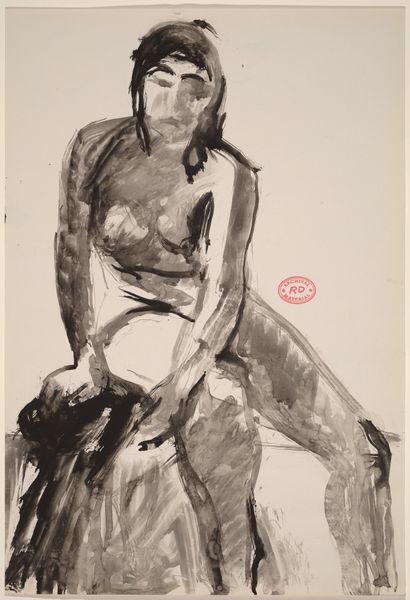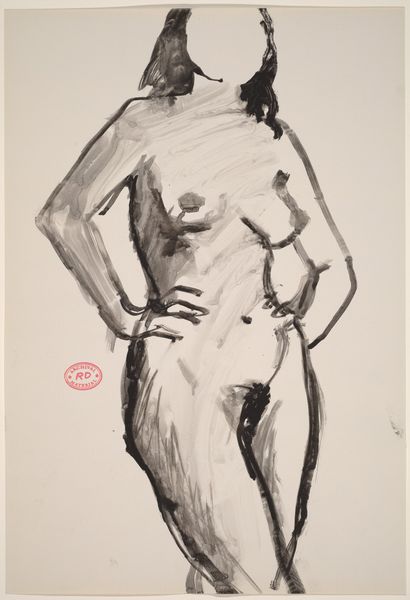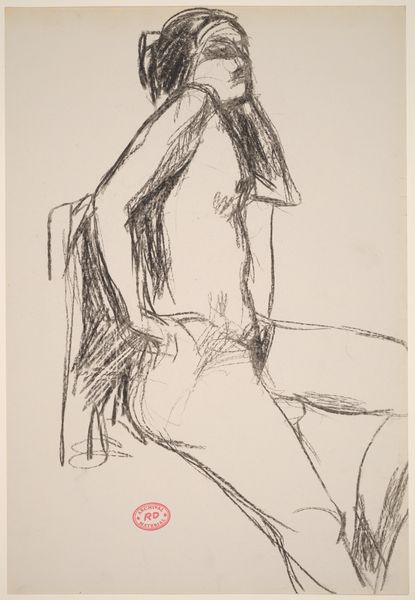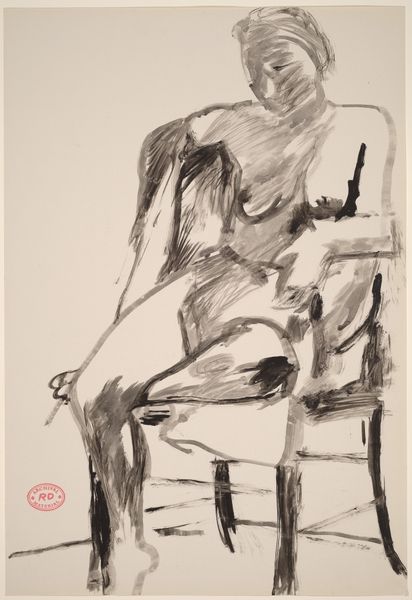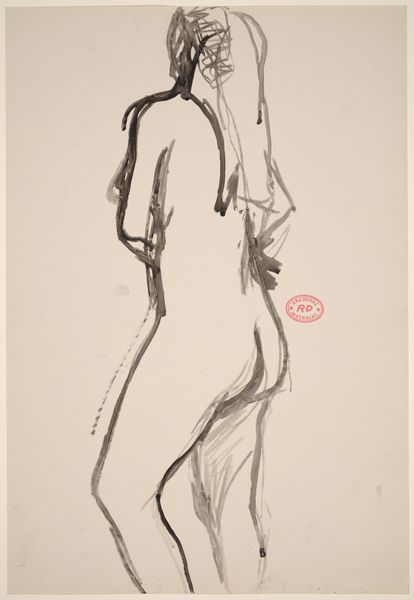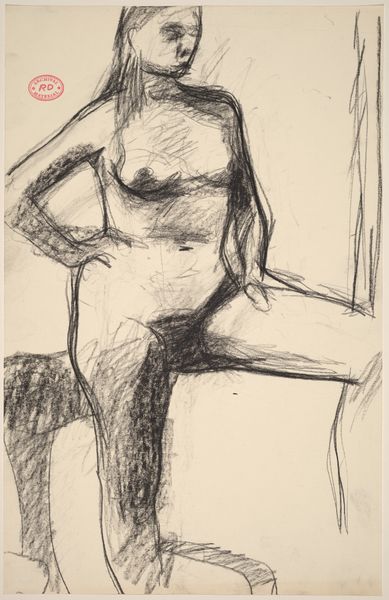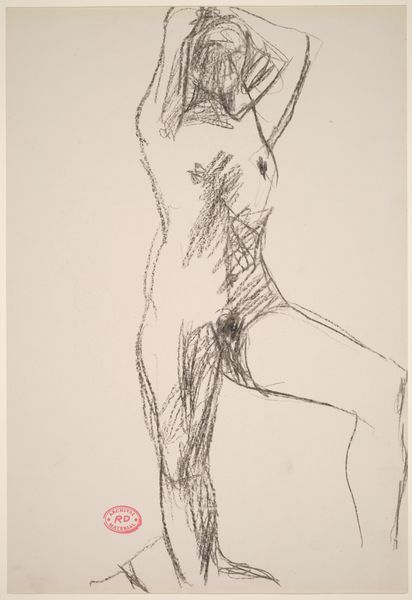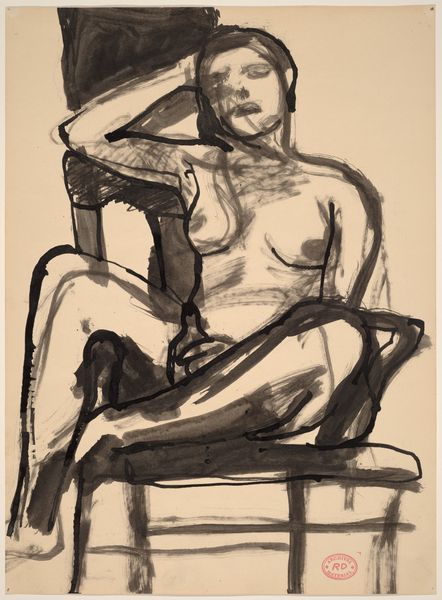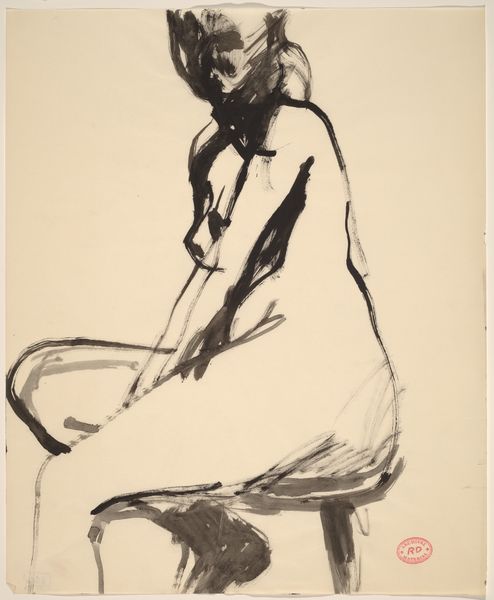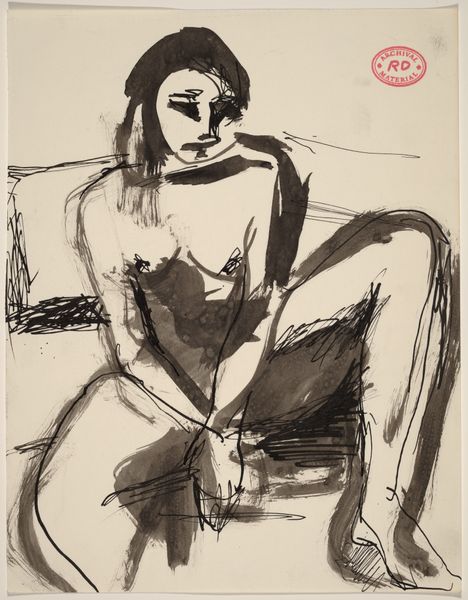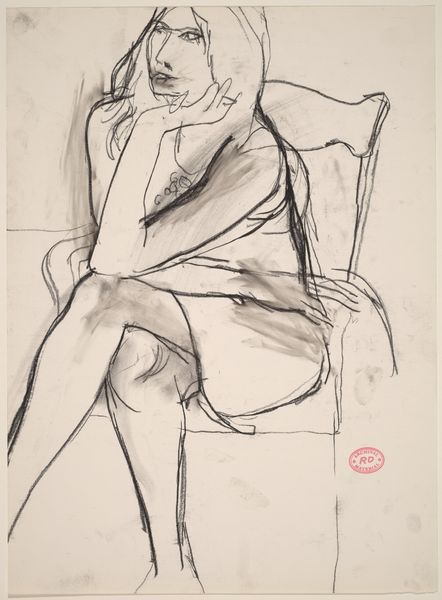![Untitled [female nude seated on a stool and looking down] by Richard Diebenkorn](/_next/image?url=https%3A%2F%2Fd2w8kbdekdi1gv.cloudfront.net%2FeyJidWNrZXQiOiAiYXJ0ZXJhLWltYWdlcy1idWNrZXQiLCAia2V5IjogImFydHdvcmtzL2ZiOTgwY2ZiLTcwMzktNGZlZi1hMDQxLWE5NjIwYzgxYjA3ZC9mYjk4MGNmYi03MDM5LTRmZWYtYTA0MS1hOTYyMGM4MWIwN2RfZnVsbC5qcGciLCAiZWRpdHMiOiB7InJlc2l6ZSI6IHsid2lkdGgiOiAxOTIwLCAiaGVpZ2h0IjogMTkyMCwgImZpdCI6ICJpbnNpZGUifX19&w=3840&q=75)
Untitled [female nude seated on a stool and looking down] 1955 - 1967
0:00
0:00
drawing, ink
#
drawing
#
figuration
#
bay-area-figurative-movement
#
ink
#
nude
Dimensions: overall: 40.6 x 27.9 cm (16 x 11 in.)
Copyright: National Gallery of Art: CC0 1.0
Curator: Richard Diebenkorn's ink drawing, "Untitled [female nude seated on a stool and looking down]," created between 1955 and 1967, offers a deceptively simple study of the human form. What strikes you about it initially? Editor: There's a melancholic quality, wouldn’t you say? The downward gaze, the stark ink... it conveys a real sense of introspection, a weight almost. The sparse rendering makes the figure vulnerable, perhaps even defeated. Curator: That’s astute. The downward gaze certainly channels a specific emotional current. The artist likely sought to explore themes around objectification, challenging a history that often strips female figures of agency in visual representation. By concealing the face, the model's subjectivity is displaced, allowing her form to serve as a reflection of broader themes around vulnerability. Editor: Yet that downward gaze has appeared countless times over millennia in allegorical paintings of female virtue or figures representing grief or penitence. And then there is the seated position—so ancient and still laden with associations to royalty, servitude, and everything in between. How does Diebenkorn manipulate these iconographic tropes, these deeply embedded visual associations? Curator: Diebenkorn presents a more ambiguous situation for sure. It's easy to impose a reading of despondency, yet this model also projects self-containment; we cannot see enough to ascribe the feelings precisely. Think about the legacy of female portraiture by male artists throughout the centuries and how little we actually learn of a real individual woman—I find the ambiguity really subversive. It seems to invite a new kind of gaze, a reconsideration. Editor: I agree. I think it has the same effect on us today. These familiar poses trigger instant associations in our subconscious, and Diebenkorn prompts a reckoning with that. Are we really 'seeing' or merely processing images through well-worn channels? This simple sketch ends up packing quite the psychological punch! Curator: Absolutely. Considering the socio-political context and Diebenkorn's artistic approach, it offers a potent commentary on art history. Editor: It makes one reconsider art's persistent symbols and reflect on their power over us, the viewers, over the centuries and decades.
Comments
No comments
Be the first to comment and join the conversation on the ultimate creative platform.
